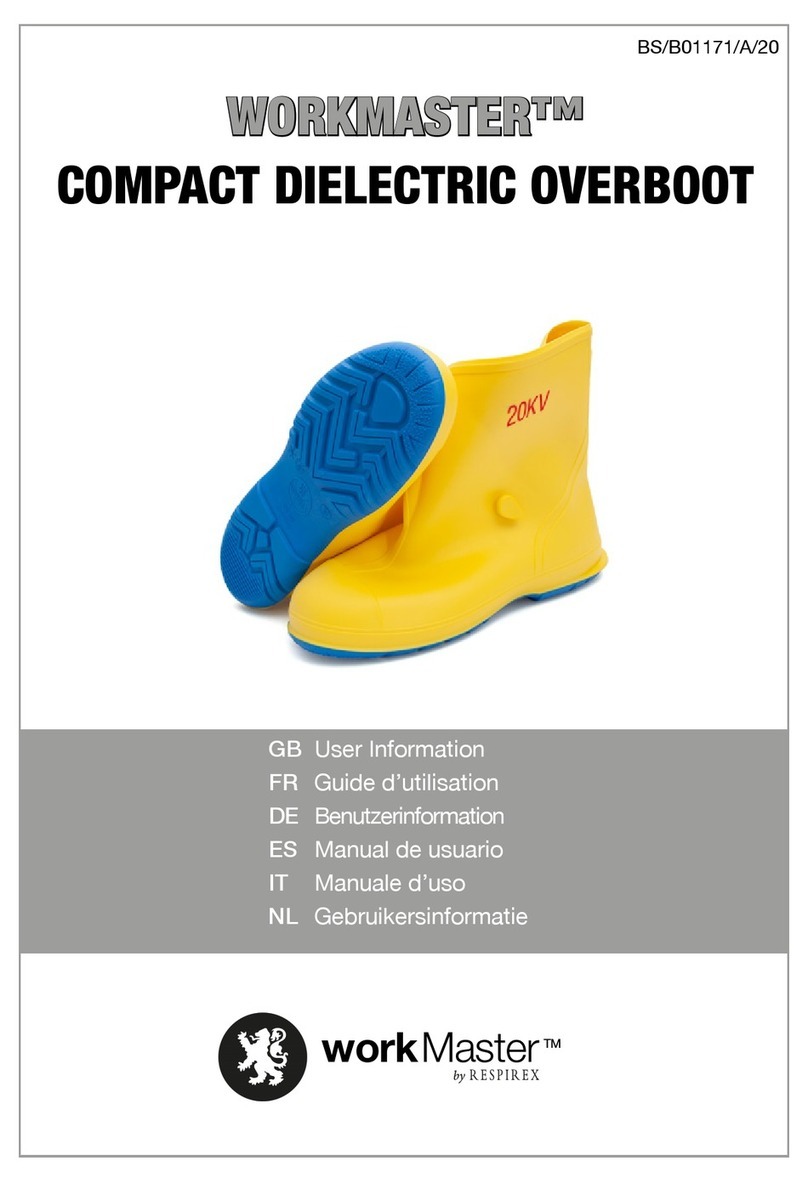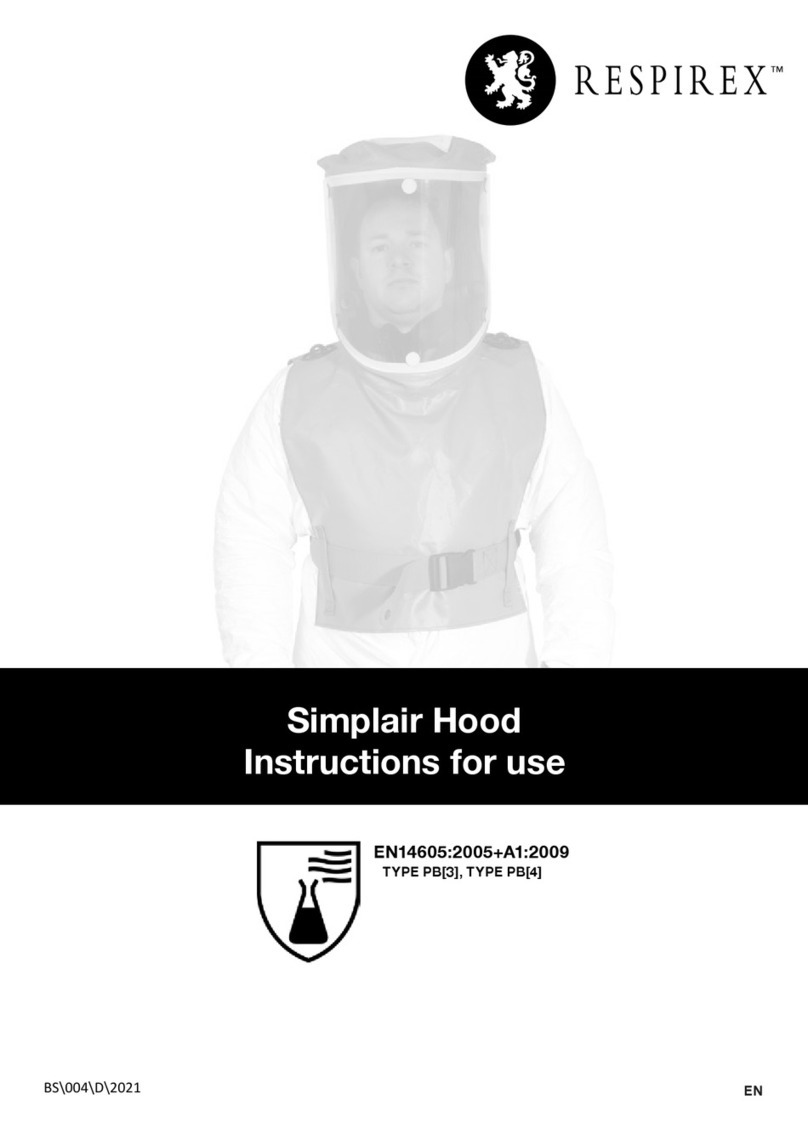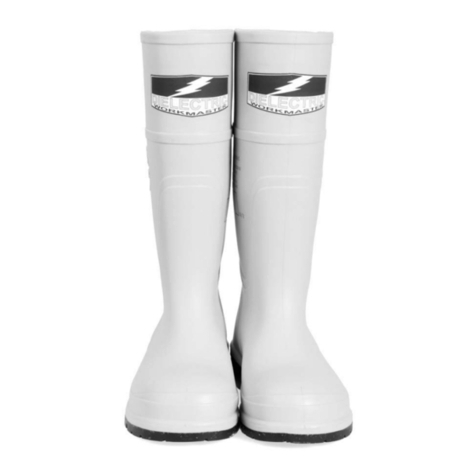Respirex Frontair 2 Suit User manual
Other Respirex Safety Equipment manuals
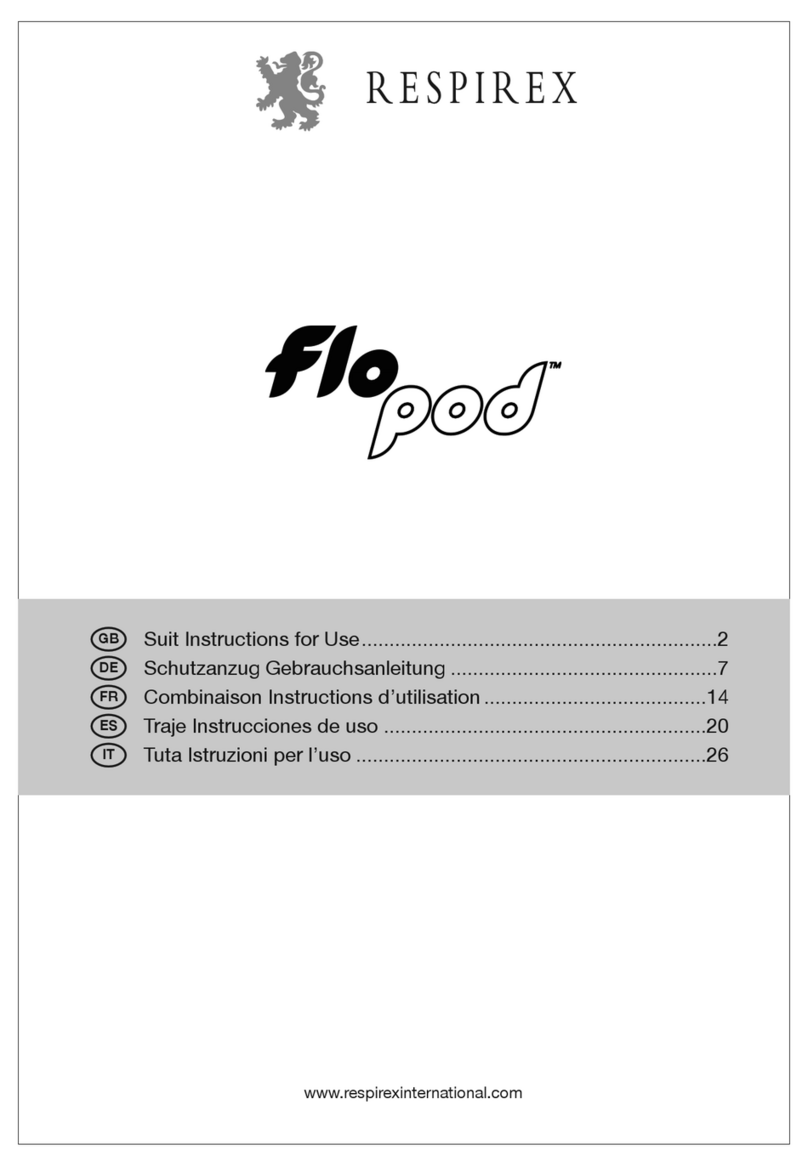
Respirex
Respirex Flo-Pod User manual
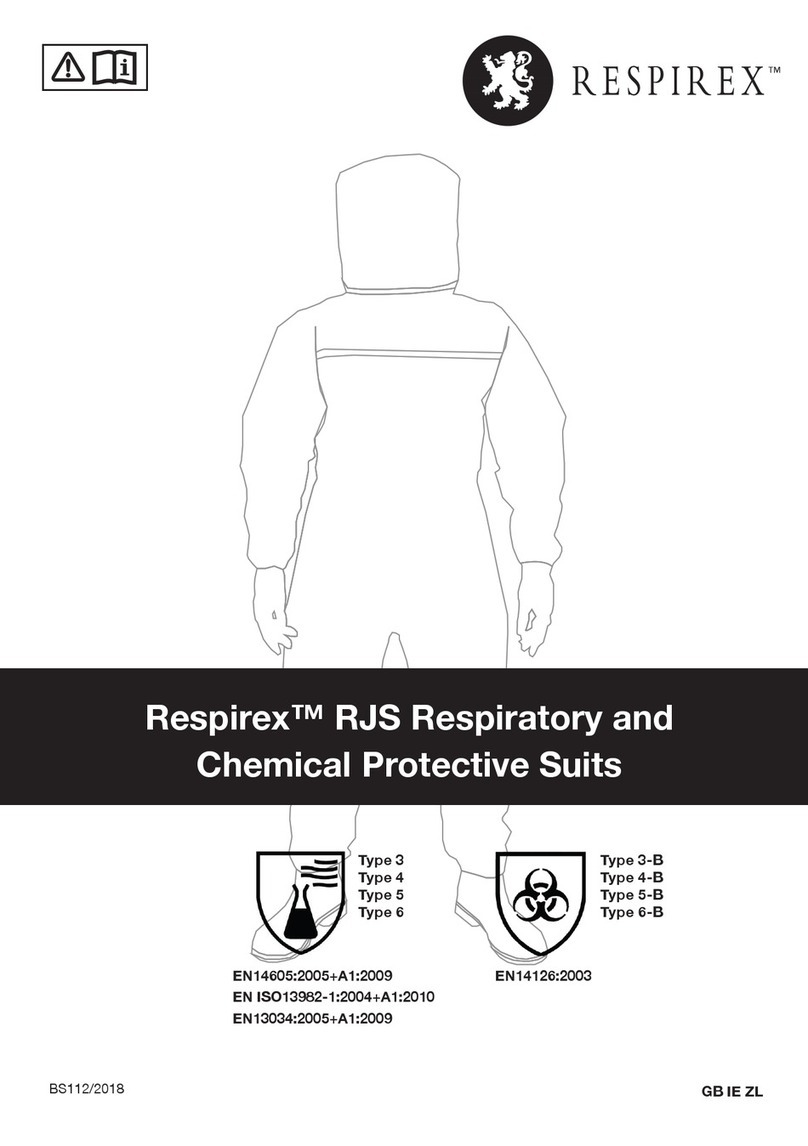
Respirex
Respirex RJS Series User manual
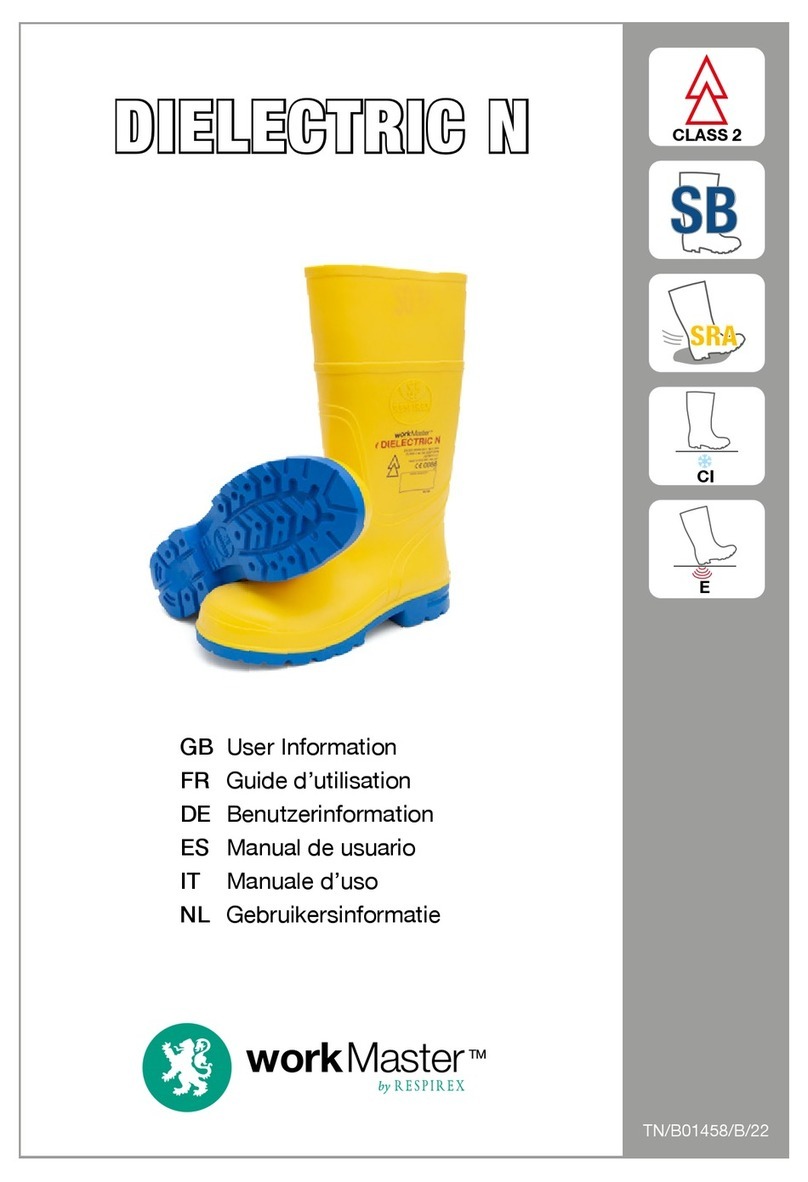
Respirex
Respirex Work Master Dielectric N Operation manual
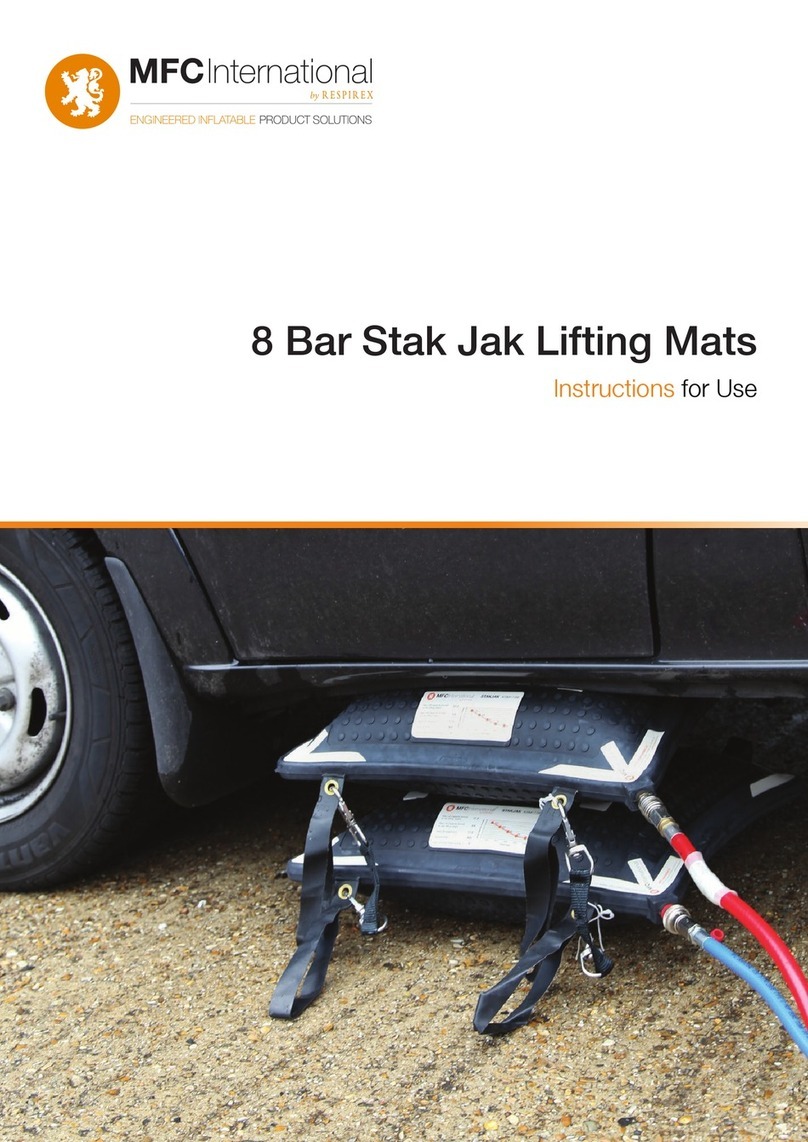
Respirex
Respirex MFC International STAKJAK KSM17 User manual

Respirex
Respirex WORKMASTER DIELECTRIC Operation manual

Respirex
Respirex CHEMPROTEX 300 SPLASHMASTER Operation manual
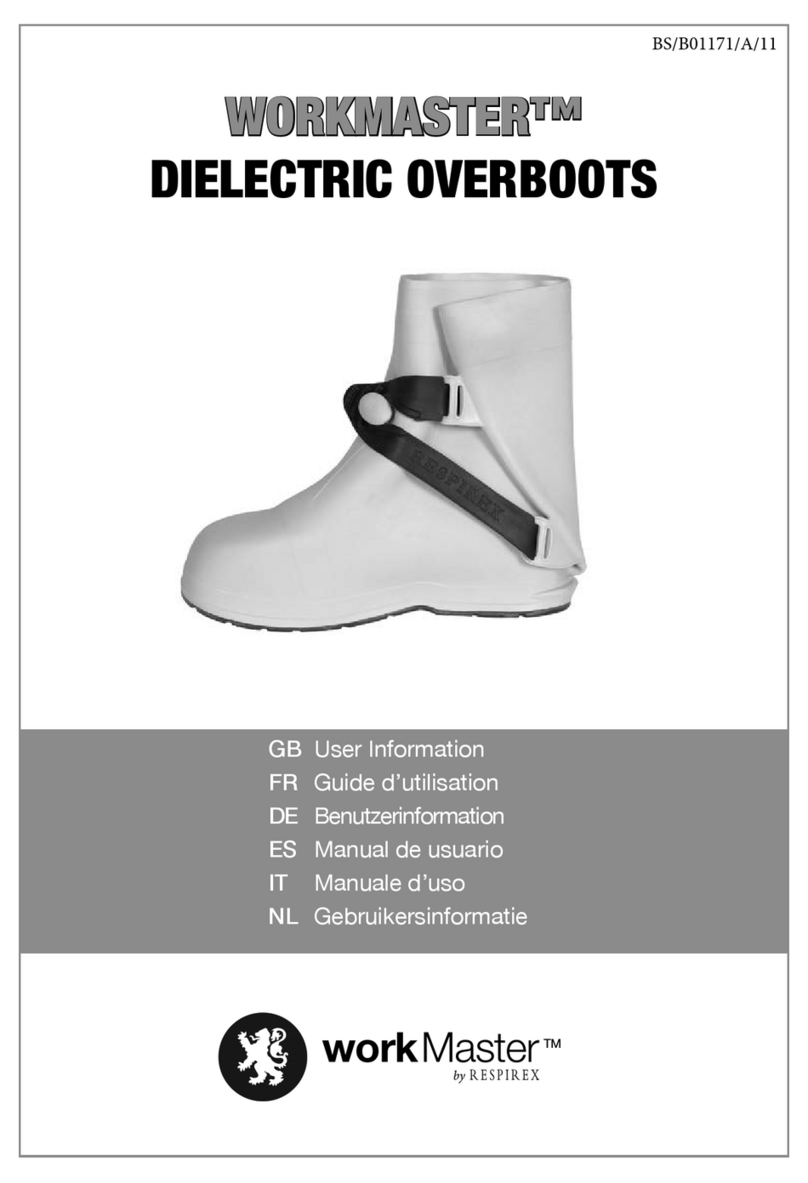
Respirex
Respirex WORKMASTER DIELECTRIC OVERBOOTS Operation manual
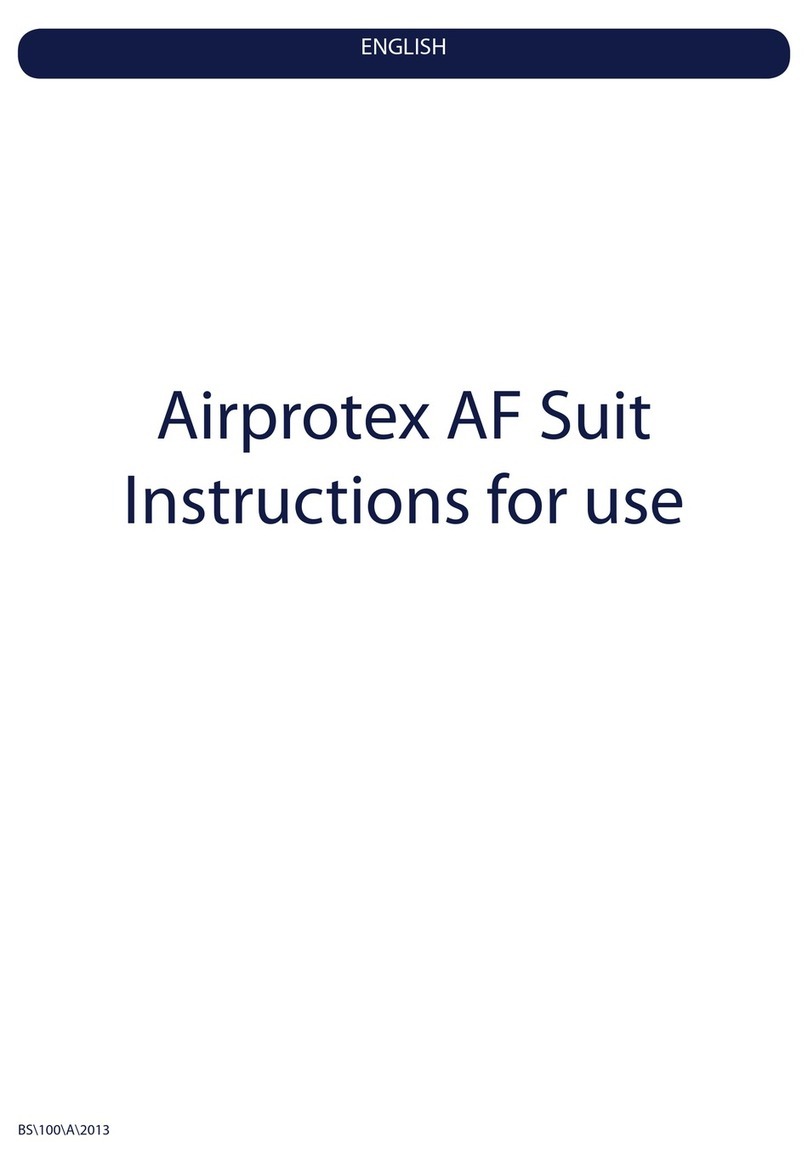
Respirex
Respirex Airprotex AF User manual
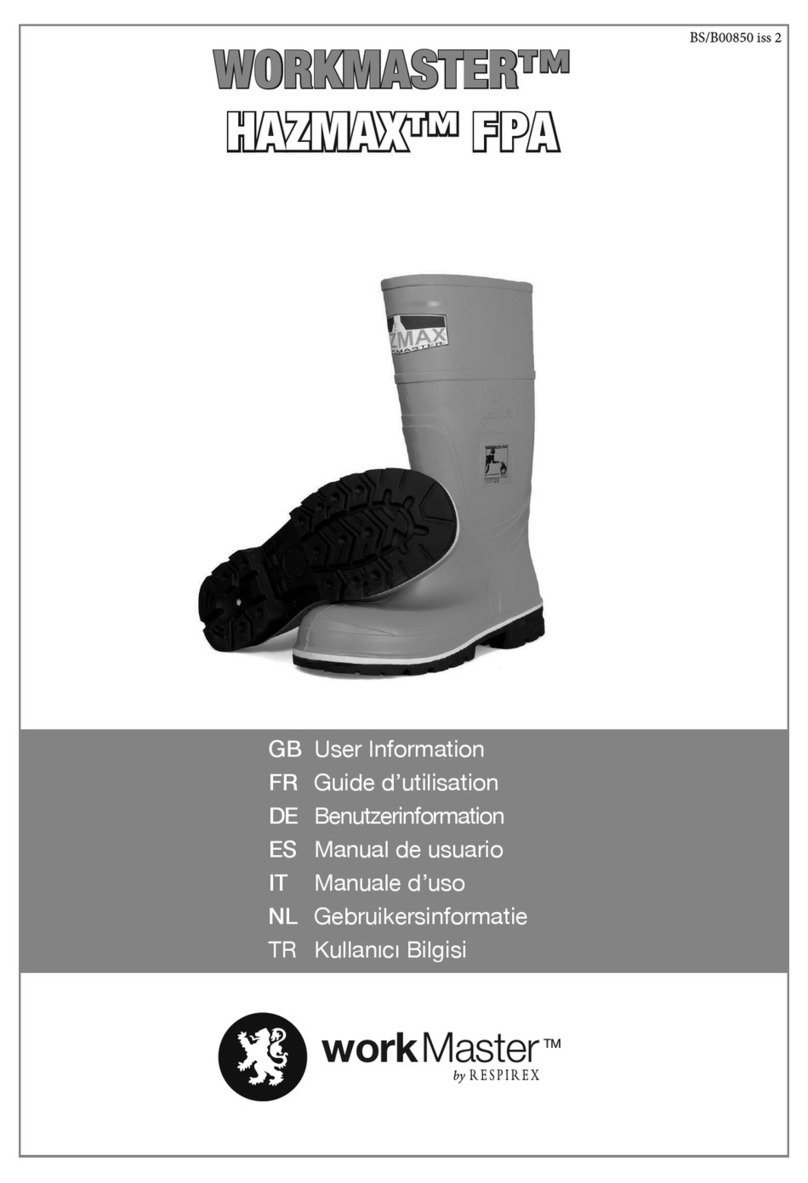
Respirex
Respirex Workmaster HAZMAX FPA Operation manual
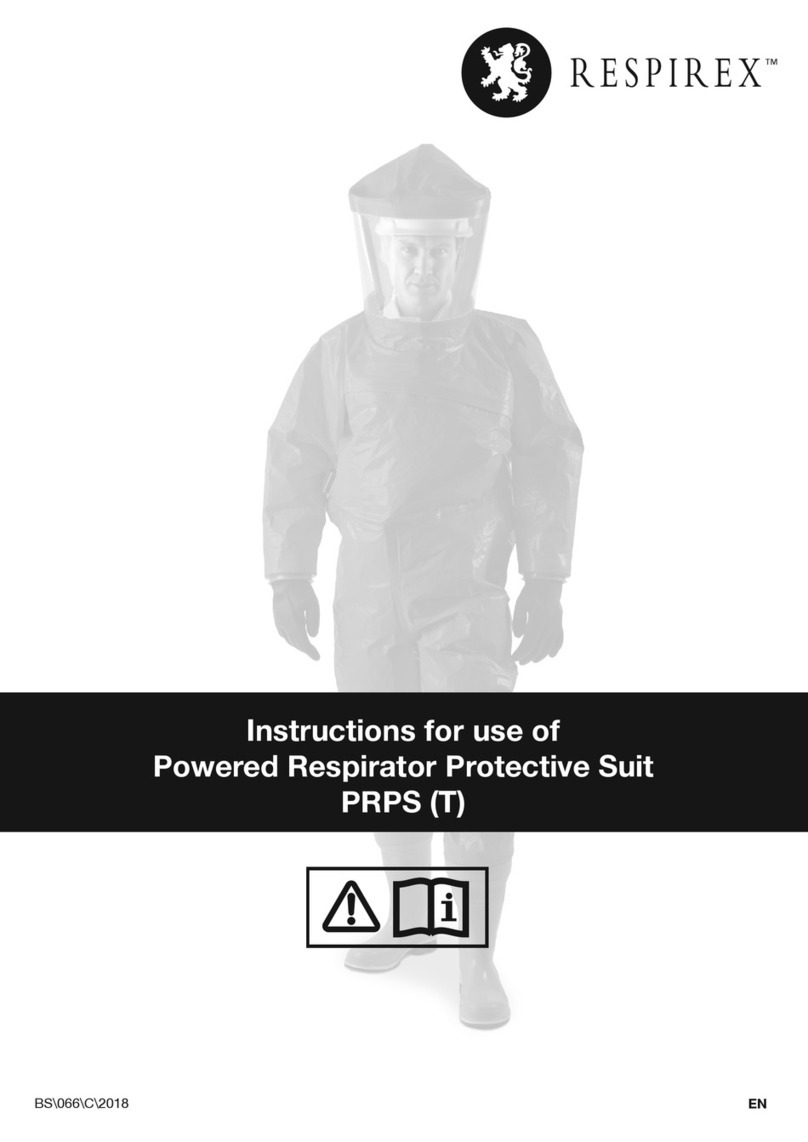
Respirex
Respirex PRPS (T) User manual
Popular Safety Equipment manuals by other brands

Lanex
Lanex PB-20 instruction manual

SKYLOTEC
SKYLOTEC ANCHOR ROPES Instructions for use

Besto
Besto Buoyancy Aid 50N Instructions for use

TEUFELBERGER
TEUFELBERGER NODUS Manufacturer's information and instructions for use

Troy Lee Designs
Troy Lee Designs Tbone Product owners manual

Innova
Innova Xtirpa Instruction and safety manual

bolle SAFETY
bolle SAFETY B810 quick start guide

SHENZHEN FANHAI SANJIANG ELECTRONICS
SHENZHEN FANHAI SANJIANG ELECTRONICS A9060T instruction manual

Hiltron security
Hiltron security POWER8E Installation and use manual

Salewa
Salewa MTN SPIKE user manual

Hatco
Hatco B-950P installation guide

Sitec
Sitec TX MATIC operating manual
